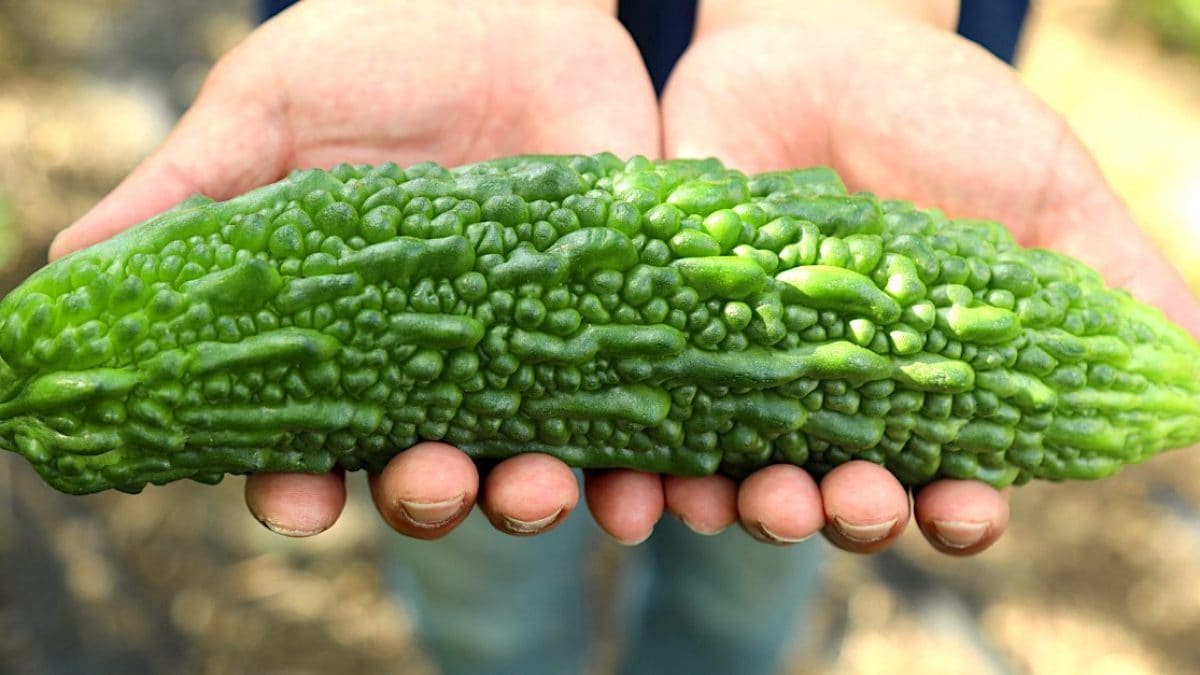
It grows mainly in warm places, needs rather high temperatures to develop, is particularly widespread in Asia and Africa and could suffer from an identity crisis due to the many names with which it is called.
We call it bitter melon (or bitter gourd) but depending on its place of origin it is known as momordica, charantia, ampalaya, kerala and goya. It is part of the same family as cucumbers, pumpkins and zucchini, it is characterized by a strong bitter flavor (as the name itself suggests) and by a shape that is certainly new. If compared, at least, to that of its relatives mentioned above.

In length and size it may seem, in fact, a cucumber or a zucchini, but its rather lumpy and irregular skin makes the bitter melon appear, let's give free rein to our imagination, almost like a candle; one of those that, lit for a long time, have the wax drips now dried on the central body of the same. Add a coat of bright green and there you have it, more or less, the bitter melon.
Not very beautiful to the eye, assures those who have tasted it, nor so tasty to the palate. The question then arises spontaneously: if it is not good, why eat one of the most bitter fruits in the world? Because its intake would ensure numerous benefits to our body.
Bitter Melon, The Fruit Consumed While Still Unripe
One of the peculiarities of this melon, in addition to its peculiar shape and the many different names by which it is known, is that it is generally consumed when still unripe. When it is, it is still quite bitter, but still less sour than when it is fully ripe.

Yes, because bitter melon accentuates its pungent flavor once ripe, instead of increasing its sugar content (as happens instead with the vast majority of fruits). In short, if you come across bitter melon, it is better to eat it (the more daring even eat it raw) when its peel is still green. As time passes, this turns yellow, even taking on orange tones, and at the same time its pulp becomes increasingly sour.
The Benefits of Bitter Melon
As mentioned, although apparently bitter melon does everything to avoid being eaten, its benefits for the body are truly numerous. The peel can also be eaten raw, after removing the white pulp with the seeds (which can also be toxic) but if you are not a fan of very bitter flavors it is better to cook everything, to tone down the marked sourness. In the countries where it is most widely consumed (including China, South Asia, South East Asia and Africa) the crunchy rind of bitter melon (similar to that of raw pepper) is sautéed in a pan with various spices, stews or curry dishes are made. All this is best after having blanched the peel in water, to make it more tender and smooth out its consistency.

The intake of this vegetable, as anticipated, brings many benefits to our body. It is rich in antioxidants, it would have properties capable of counteracting the development of tumors. It aids digestion, is anti-inflammatory and due to the presence of folic acid, its intake is also recommended for pregnant women. The assimilation of bitter melon helps to reduce blood sugar levels, fighting glycemic peaks, it would also be beneficial against type 2 diabetes.
Finally, per 100 grams of product, it contains 17 calories and among the minerals present we can mention sodium, potassium, copper, iron and magnesium. It may not be beautiful, it may not even be that good, but inside this tough (literally) shell the bitter melon evidently hides many qualities.
;Resize,width=767;)
